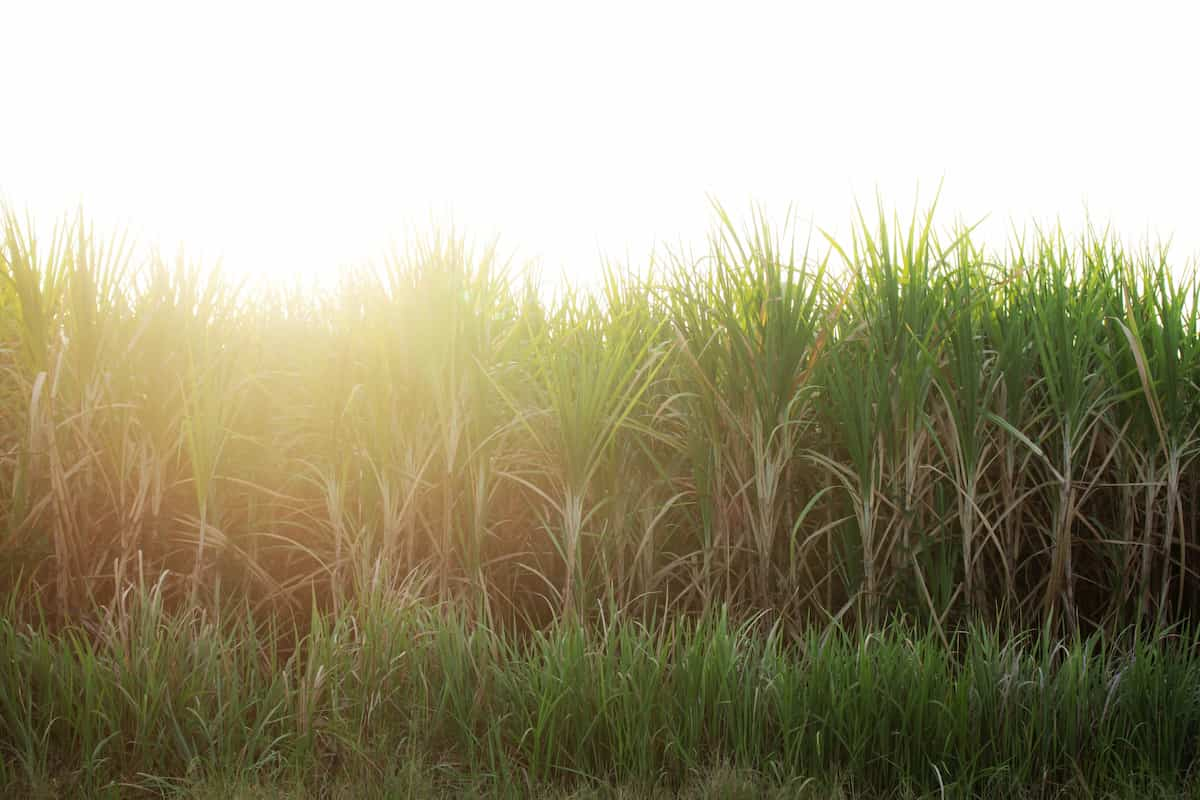The white maggot Holotrichia serrata is a soil pest in tropical India that significantly affects sugarcane crops. While its larvae initially feed on decaying plant matter, in later phases, they can cause severe root damage, potentially leading to crop failure. Before the spread of sugarcane cultivation, monoculture, and limited varietal diversity, the pest was only found at high altitudes or in areas with assured rainfall. However, these factors have allowed the pest to expand its range. Effective management strategies are necessary to control this pest and mitigate its impact on sugarcane production.

White Grub Management in Sugarcane
Life Cycle of White Grub
- Sugarcane areas, fallow lands, grassy bunds near water channels, and grubs lay eggs.
- Beetles mate on host trees, eat leaves, and return to the soil.
- After rains, white grubs turn into insects at nightfall.
- First-instar grubs hatch after 10-12 days and feed on grass roots or organic debris before switching to sugarcane in the first two instars, each lasting one month.
- Third-instar grubs consume sugarcane stems for three to four months.
- Adults appear 10-14 days after earthen cells pupate.
- Adult bugs stay underground until early spring rains bring them out.
- The life cycle of white grub lasts one year.
Host range: Sugarcane, corn, rice, sorghum, neem, ailanthus, and cotton host white grubs. They also feed on weeds and grass stems.
Identification of White Grub in Sugarcane in the Field
- Farmers can identify sugarcane fields infested with white grubs by digging up plants and inspecting the roots for the creamy white, C-shaped larvae.
- Mature grubs are on average in the root zone of impacted clusters. Infestation symptoms include leaf yellowing and wilting, gradual leaf browning, and stunted growth of mature stems. As with flooding, white grub infestations can be so extreme that entire fields are wiped out.
Damage Symptoms of White Grub in Sugarcane
- White grub larvae cause damage to sugarcane roots, decreasing the plant’s water and nutrient supply.
- The symptoms are similar to drought damage: initial yellowing and withering of leaves, followed by browning and deterioration of maturing stalks.
- Insects may tunnel into cane stalks, causing additional damage.
- Extreme infestations can cause cane lodging and collapse.
- Seven to ten mature grubs are present in the root zone of clusters with white grub damage.
- The inability to control late-stage damage with pesticides can lead to crop failure.
- In the case of severe infestations and early phases of cane growth, replanting may be required.
- In extreme circumstances, entire fields can be destroyed by damage that typically affects regions.
- As a result of white grub damage, weight loss, and cluster dehydration can also occur.
Factors Favoring Growth/ Causes of White Grub Spread in the Field
- White grub larvae have a creamy white, C-shaped body and become more voracious as they mature, causing damage if left unchecked.
- The quantity of damage caused by white grubs depends on their number, age, sugarcane variety, and growth stage at the time of the attack.
- Attacks on old cane result in a decrease in yield.
- White grubs grow and spread in sugarcane fields where the soil is warm and wet, there is a lot of rain, drainage is bad, and too many organic matter fertilizers are used.
- Crop rotation and legume intercropping can aid in reducing white worm populations.
In case you missed it: Internode Borer Management in Sugarcane: Symptoms, Treatment, Chemical, Biological, Natural, and Organic Control

Impact of White Grub on Sugarcane Yield
Infestations of white grubs in sugarcane fields can result in significant yield losses; in extreme instances, losses can reach 80-100%. The year-round planting of crops helps spread white grubs in response to market demands, raising the risk of attack on young crops.
Cultural Management of White Grub in Sugarcane
- White grub in sugarcane can be controlled with cultural and physical pest management strategies.
- Adequate irrigation needs to be supplied.
- It is not recommended to perform deep plowing right after a Ratoon grain harvest.
- To encourage the grub out of the ground, leaving water standing in the area for 24 hours is recommended.
- Adult beetles near Neem, Ailanthus, and Acacia plants should be gathered and disposed of right after a summer rainstorm.
- Place many extremely bright petromax lights in places bordering fields and borders.
Biological Management of White Grub in Sugarcane
- White grub is a destructive pest of sugarcane, and biological management provides a long-term solution to the problem.
- Due to the underground nature of long-lasting grubs, the utility of parasitoids is limited.
- Still, entomopathogenic fungi, such as Beauveria brongniartii, show the potential to suppress white grub.
- This fungus infects all phases of the white grub, particularly the larvae, by penetrating their body walls and suffocating them with mycelia, thereby killing them.
- The fungus gives a distinctive pink color to the grub’s body and blankets it with white mycelia and spores.
Chemical Management of White Grub in Sugarcane
- Preventative steps and biological treatments are the best way to get rid of white grubs in sugarcane.
- Chemical control includes using insecticides in the soil, like chlorpyrifos or chlorpyrifos-methyl, that kill white grub if put on the root zone before planting.
- However, chemical control in ratoon fields may not be feasible.
- White grub protection lasts longer with slow-release formulations of soil insecticides.
Organic Management of White Grub in Sugarcane
- Sugarcane fields can have lesser infections if trap trees are used to attract beetles and then kill them. We can use trees like the Jayanti, turi, Acacia tomentosa, asam, jengkol, and cashew.
- Beauveria spp.-based biopesticides can be used to manage insect populations.
- Soil nutrients can be increased through crop rotation with leguminous plants, which could lead to fewer pest problems.
In case you missed it: Ergot or Sugary Management in Sorghum: Disease Symptoms, Treatment, Chemical, Biological, Natural, and Organic Control

Preventive Measures for Control of White Grub
- Preventive measures for white grub control in sugarcane include cultivating tolerant varieties, monitoring fields for signs of grubs and beetles, using traps to assess populations, avoiding clay soils, and maintaining soil fertility.
- To prevent the buildup of white grub populations, it is advisable to avoid broad-spectrum insecticides and to either deep plow to expose grubs to predators or remove debris and stubble after harvest.
- Rotation with non-host crops and leaving the field fallow can also help break the life cycle of grubs. By implementing these measures, chemical control can be minimized, and white grub populations reduced.
Conclusion
Managing white grubs in sugarcane requires an integrated strategy, including preventive measures like growing tolerant varieties, watching fields, and keeping soil fertile, and curative measures like thorough plowing and removing debris after harvest. Care should be used when utilizing chemical, biological, natural, or organic control techniques to reduce harm to beneficial insects and the environment.
- Deworming Schedule for Dogs/Puppies: A Beginners Guide
- How to Prevent and Control Parasites in Goats
- Beneficial Insects in Pest Management
- Natural Solutions for Pest Control in Flower Gardens
- Types of Fungicides Used in Agriculture
- Common Issues in the Fruit Development Stage of Pomegranate Farming
- Fruit Development Issues in Papaya: Easy Solutions and Treatment
- Soil-Borne Diseases and How to Protect Your Plants
- Practices to Prevent Disease Spread in the Garden